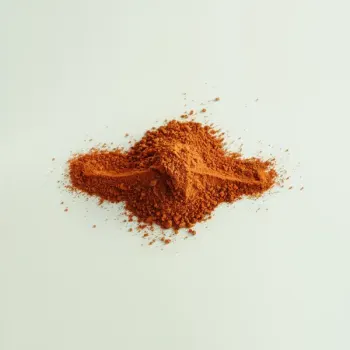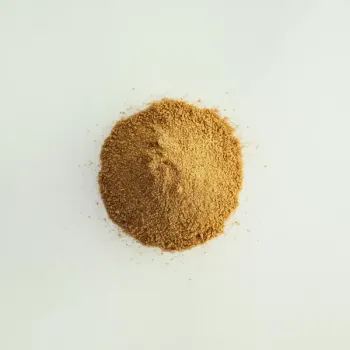Chili Powder is a spicy blend of various spices including chili peppers, while Ground Cumin is a single spice with a warm, earthy flavor. Both are used to add depth and character to dishes, with Chili Powder bringing heat and Cumin offering a distinct taste.

Chili Powder is a blend of spices that often includes ground chili peppers, paprika, garlic powder, onion powder, oregano, and cumin. It brings a complex, fiery flavor to dishes, with a heat level that can vary from mild to hot depending on the blend.

Ground Cumin is made by grinding cumin seeds into a fine powder. It's a key ingredient in many global cuisines, imparting a warm, earthy flavor with a slightly bitter undertone. It's versatile and can be used in numerous dishes for its distinctive taste.
Chili Powder and Ground Cumin differ primarily in their flavor profiles and ingredient composition. Chili Powder is a blend that offers a varying degree of heat and complex flavors, while Ground Cumin provides a singular, earthy note. Texture-wise, both are powders, but Chili Powder may have a slightly coarser grind due to the blend of ingredients. The source of heat in Chili Powder comes from chili peppers, whereas Cumin's flavor is not spicy but rather deeply aromatic.

Your ultimate Recipe Box, Meal Planner, and Cooking Class all in one
Best used in recipes like Chili Con Carne, Tex-Mex casseroles, and fajitas. Expect a robust kick of heat and a rounded spice flavor. Use it to season meats or beans, and start with a small amount, adjusting to taste. Ideal for seasoning taco fillings, enchiladas, and salsas. It adds depth and complexity to the dish without contributing significant heat. Cumin's distinctive taste is key in achieving the authentic flavor of Tex-Mex cuisine.
In Indian curries, Chili Powder provides the heat and vibrant color that are characteristic of many dishes. It works well in recipes like Vindaloo or Madras curry. Adjust the quantity to control the spice level. Cumin is a staple in Indian cooking, essential for dishes like Tadka Dal and Jeera Rice. It imparts a nutty, peppery flavor that complements the other spices in the curry. Roast the cumin before grinding to enhance its aroma.
While not traditionally Middle Eastern, some modern recipes like spicy Shakshuka or Harissa paste may call for a pinch of Chili Powder to add heat and complexity to the dish. Cumin is deeply integrated into Middle Eastern dishes such as Falafel, Hummus, and Kebabs. It provides an unmistakable earthy note that's essential in these recipes. Cumin can also be used to season meats and vegetables.
Substitution between Chili Powder and Ground Cumin can be done cautiously. In recipes where the heat from Chili Powder isn't integral, Ground Cumin can provide a similar earthiness without the spiciness. Conversely, adding Chili Powder in place of Cumin will increase the heat and complexity of a dish, which might not always be desired. Always start with a smaller amount and adjust to taste.
Yes, but expect a change in the heat level and flavor complexity of your dish. Generally, yes. Chili Powder includes hot chili peppers, which contribute to its spiciness. They can be substituted with caution, as they have different flavor profiles and heat levels. Use a small amount and adjust to taste, as Ground Cumin does not provide the same heat as Chili Powder. Absolutely! Combine Ground Cumin with other spices such as paprika, garlic powder, and ground chili peppers to create a custom Chili Powder blend.
Both Chili Powder and Ground Cumin are low in calories and offer various health benefits, including being good sources of minerals like iron and magnesium.
| Nutrient | Chili Powder ( Per Teaspoon ) | Ground Cumin ( Per Teaspoon ) |
|---|---|---|
| Fat | 0.4g | 0.5g |
| Fiber | 0.9g | 0.2g |
| Sodium | 77mg | 4mg |
| Protein | 0.4g | 0.4g |
| Calories | 8 | 8 |
| Carbohydrates | 1.4g | 0.9g |